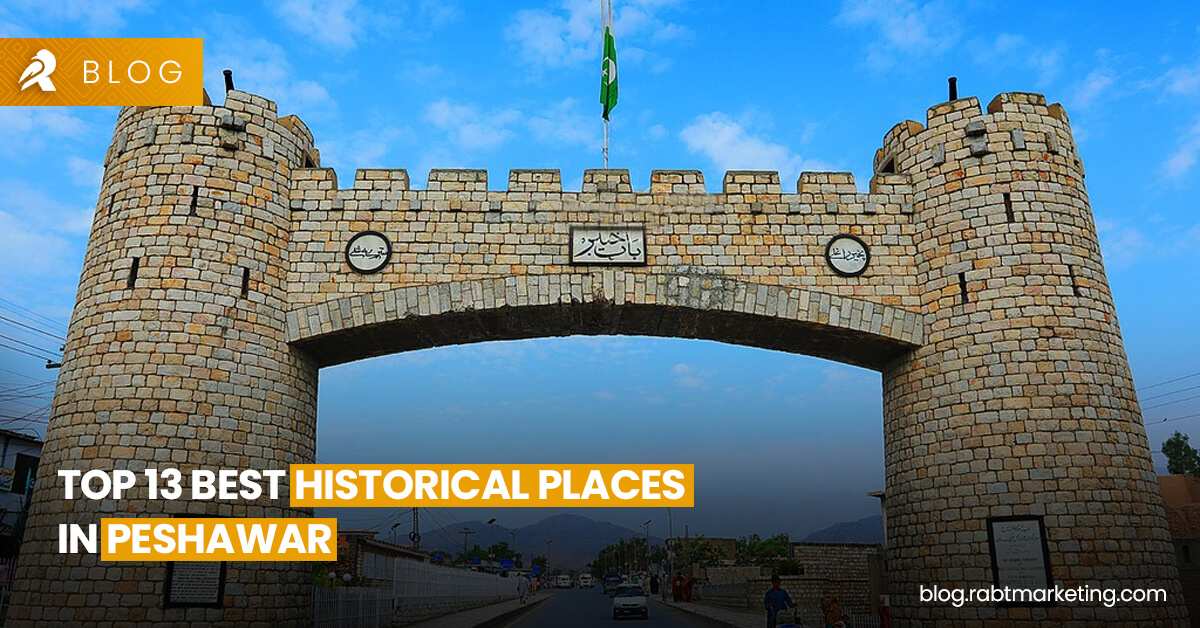Peshawar, located in the Khyber Pakhtunkhwa province of Pakistan, has a rich historical significance spanning centuries. Throughout its history, the Valley has experienced the rise and fall of empires, the passage of conquerors, and the merging of various cultures. The city is also a treasure trove of many historical places. These historical places are scattered throughout Peshawar City. Let’s discover these historical places in Peshawar.
Peshawar Museum

The Peshawar Museum in Pakistan has an extensive collection of artwork from the ancient Buddhist period called Gandhara art. It is known for having one of the world’s biggest collections of Buddhist artifacts, including many items related to Gautama Buddha. The museum displays various Buddhist objects like stone sculptures and clay figures.
Historical Significance: The main hall of the Peshawar Museum was constructed in 1906-07 as a tribute to Queen Victoria. Initially, the museum was managed by the Peshawar Municipality. In 1927 a full-time curator was appointed when the Frontier Circle office was moved to Lahore. After independence, the museum was placed under the authority of the Director of Public Instructions, who represented the Government of Khyber Pakhtunkhwa. In 1971, an independent body called the Board of Governors was formed to oversee the museum. The Government of Khyber Pakhtunkhwa in 1992 established its Directorate of Archaeology and Museums to protect better and preserve the museum.
Sethi House
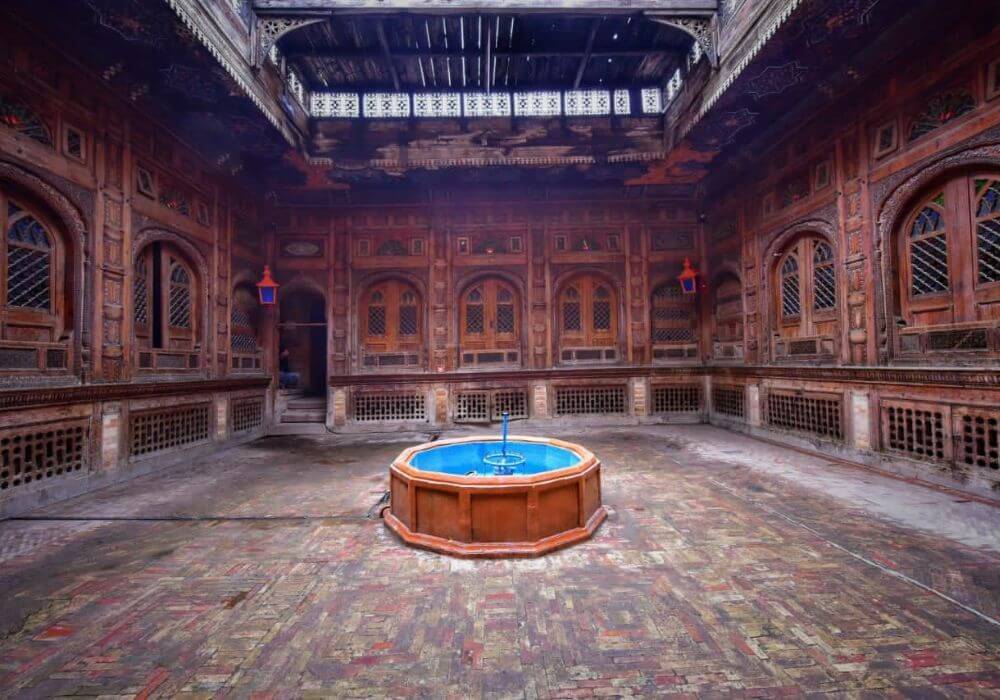
Sethian or Sethi Mohallah is a residential compound from the 19th century. It can be found adjacent to Ghanta Ghar in Bazaar Kalan, outside the western entrance of Gor Khatri. The mohalla consists of about six to seven large houses, known as mansions. Among them, Sethi House is a popular tourist destination and highly recommended for visitors.
Historical significance: The Sethi family were Hindu traders from Punjab who moved from Jhelum to Peshawar in the early 19th century. They were involved in local and international trade. They also did much charity work in Peshawar, including building wells for the poor, the Lady Reading Hospital, and the Islamia College Mosque.
Unfortunately, their businesses suffered during the Russian Revolution in 1917 and faced significant setbacks they couldn’t recover from. Later, the Kpk government took over the Sethi house and converted it into a museum.
Fort Bala Hisar

Bala Hissar is an impressive ancient fortress representing the city’s valuable history and culture. The name means “High Fort” and accurately describes the strong and enduring structure.
Historical Significance: According to historian Ahmad Hasan Dani, in 630 AD, a Chinese Buddhist monk named Xuanzang visited Peshawar and found a “royal residence” called Kung Shing. The residence was like a fortified part of the town where the royal palace stood. The fort was still present during the time of Mughal Emperor Babur, who referred to it as Bagram Fort.
From December 1747, when Ahmad Shah Durrani conquered Peshawar, the fort became a royal residence for the Durrani Empire. Timur Shah Durrani, an Afghan King from 1773 to 1793, made it the winter capital of his empire. Until the early 19th century, Peshawar served as the winter capital of the Afghan Empire, and Bala Hissar was the royal residence for Afghan kings.
However, in March 1823, the Sikhs defeated the Afghans in the Battle of Nowshera near Peshawar. They then destroyed the Afghan royal court and the Bala Hissar Fort. The fort was later reconstructed by the Sikh commander-in-chief Hari Singh Nalwa. Today, the Frontier Corps, a paramilitary unit of the Pakistan Army, uses the fort.
Also, Checkout to our this blog: Cricket Stadiums in Pakistan
Mahabat Khan Mosque
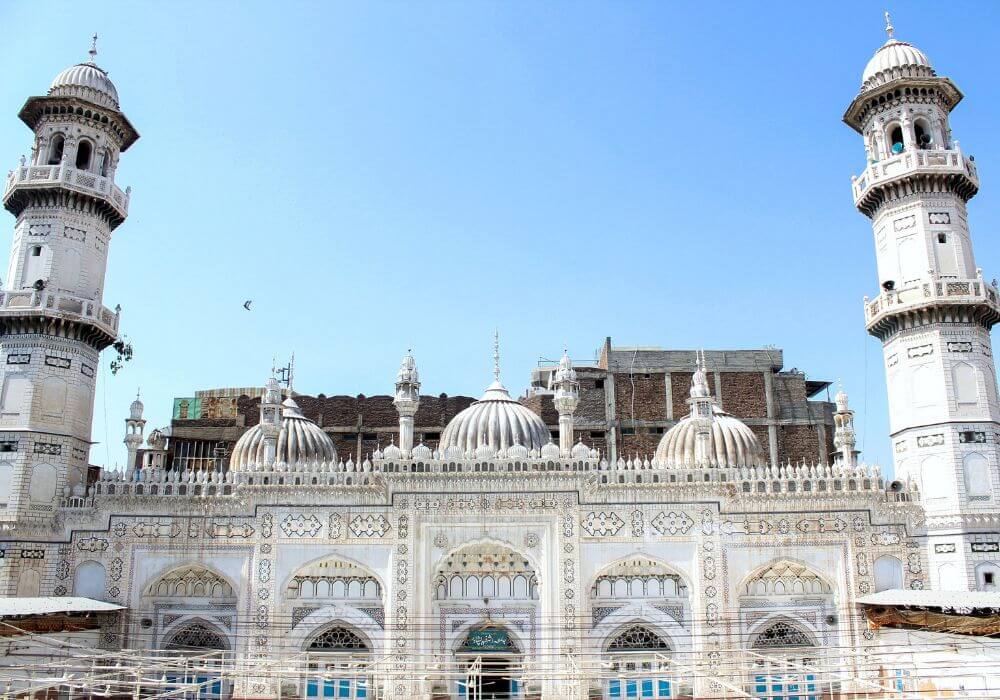
The Mohabbat Khan Mosque is a historical mosque built in the 17th century and is the largest Mosque in the city. The Mosque is located in the old part of Peshawar known as the “Inner City.” It is named after Nawab Mohabbat Khan, a governor during the Mughal Empire. The Mosque is open for tourists every day, except during prayer times and especially on Friday afternoons.
Historical Significance: The Mosque was constructed by the Mughals between 1660 and 1670 at the highest point in the old city. During the time of the Sikhs, the minarets of the Mosque were used to hang prisoners as an alternative to gallows. After the Soviet invasion of Afghanistan, in the period that followed, Afghan tribal elders would gather in the Mosque to foster unity among Afghans against the Soviets.
Islamia College
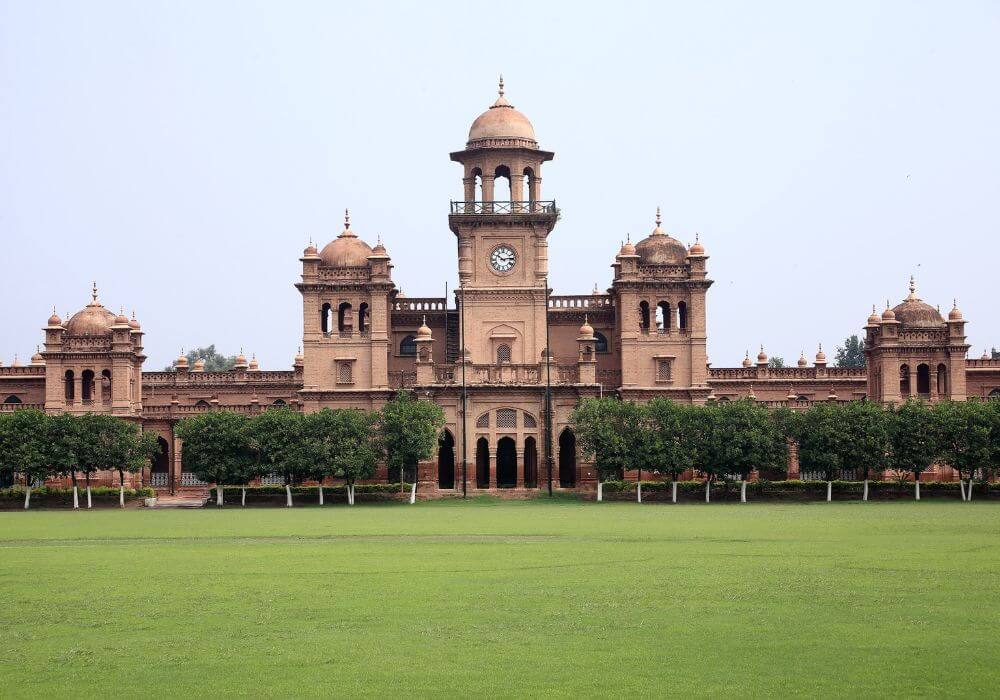
Islamic College is a public university located in Peshawar. The university provides programs for both postgraduate and undergraduate studies. The university is considered one of the top-ranking universities in Pakistan.
Historical Significance: Islamia College Peshawar, founded in 1913 by Sir S.A. Qayyum and Sir George Roos-Keppel, is one of the oldest universities in Pakistan. It offers education in various fields like arts, languages, humanities, social sciences, and modern sciences. In 1950, the University of Peshawar was established as a part of Islamia College Peshawar, which became a constituent college of the university. In 2008, the government of Pakistan granted university status to Islamia College, but the word “college” is still included in its name to honor its historical roots.
Bab-e-Khyber
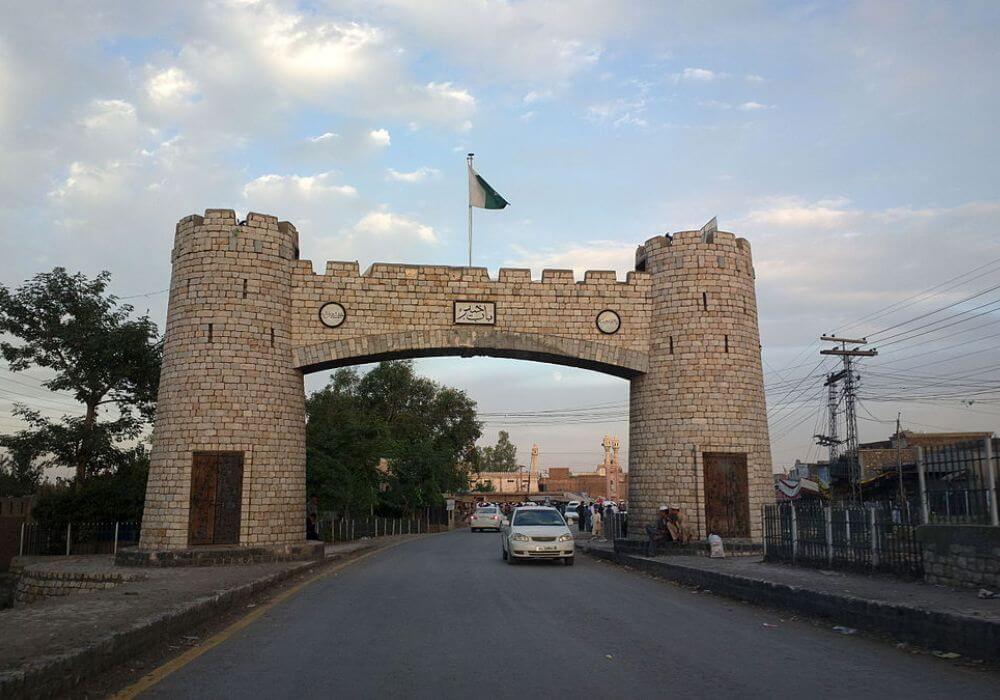
Bab-e-Khyber, also known as the Khyber Gate, is located at the entrance of the Khyber Pass in Pakistan. It is an important historical site. Due to its historical significance, the gate is depicted on the ten-rupee Pakistani currency note.
Historical significance: Khyber Pass was constructed in 1964, during General Ayub Khan’s reign. The mountain pass has been an observer of history, witnessing many invaders and brave warriors who came to the beautiful lands of the Indian subcontinent. Some notable individuals, such as Chandragupta Maurya, even ventured into Afghanistan. Many people visit Bab-e-Khyber to connect with history and learn about the region’s past, as well as the overall history of the Indian subcontinent.
Jamrud Fort
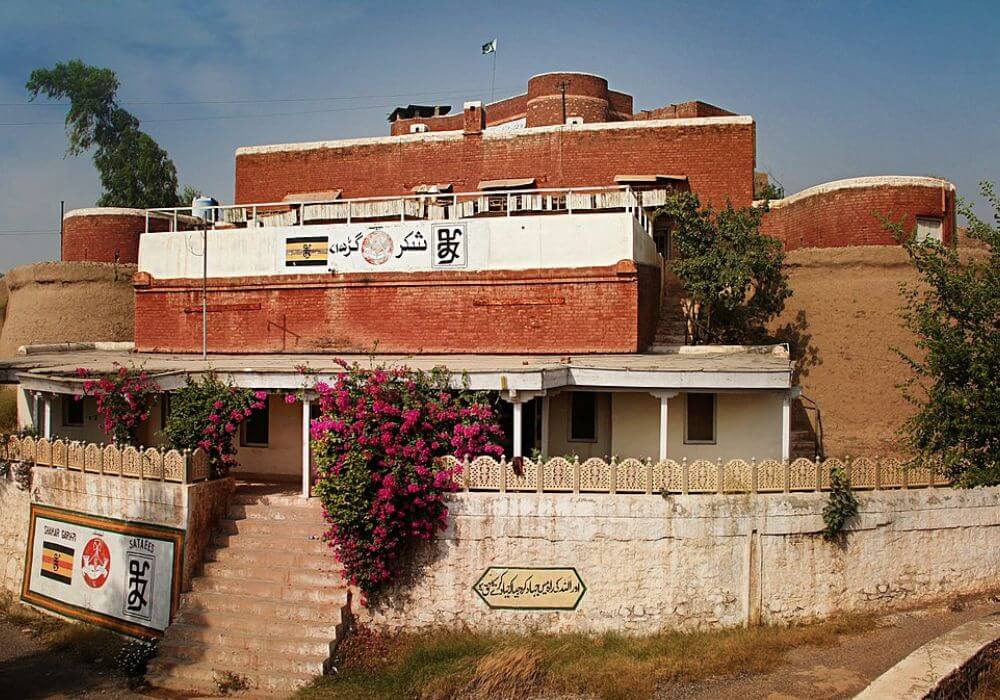
Jamrud Fort is a historic fortification that holds great significance in the region. The fort is situated at the entrance of the Khyber Pass. Tourists can visit Jamrud Fort and admire its ancient architecture, which consists of tall walls, watchtowers, and battlements. They can enjoy breathtaking views of the nearby mountains and the historic Khyber Pass from the fort.
Historical Significance: The Jamrud Fort in Peshawar, Pakistan, was constructed by Hari Singh Nalwa, a military leader of the Sikh Empire, in 1837. He was the commander-in-chief of the Sikh Khalsa Army. The fort was built as a strategic outpost to control the movement of armies and trade in the region.
In early 1837, during a celebration for Maharaja Ranjit Singh’s grandson’s wedding, Nalwa sent his forces to Lahore, leaving the fort at Jamrud unprotected. While traveling to Kabul, a British man named Mr. Fast encountered Mohammad Akbar Khan, who learned about the vulnerable fort and decided to attack it. The battle took place on April 30, 1837, resulting in heavy losses for the Sikhs. Nalwa lost his life on the battlefield, but eventually, Sikh reinforcements arrived and defended the fort, forcing the Afghan forces to retreat back to Kabul.
Qissa Khawani Bazaar
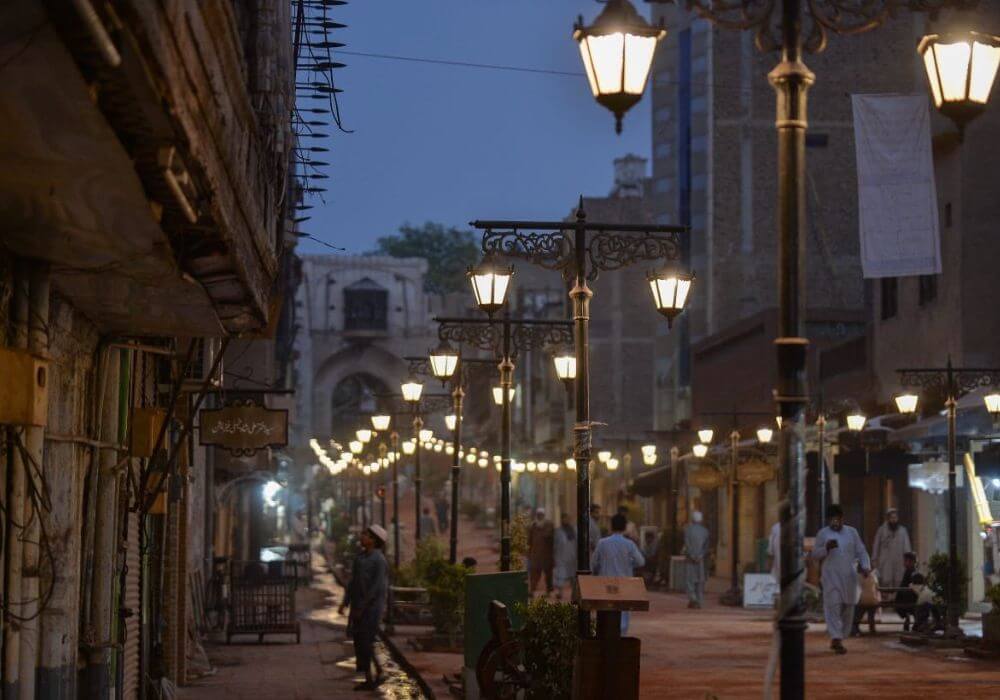
Kissa Khwani Bazaar is well-known for its Chai and Qehwa houses. It is also notable because it has produced several famous Indian movie actors. Dilip Kumar, a popular actor, was born in Qissa Khwani Bazaar around December 11, 1922. He belonged to the Awan family. Another well-known actor, Raj Kapoor, and his uncle, Trilok Kapoor, were also born in the same area. The family of actor Shah Rukh Khan still resides in Qissa Khwani Bazaar.
Historical Significance: In the past, the government of Khyber Pakhtunkhwa, Lowell Thomas, an explorer, and Herbert Edwardes, a British governor of Peshawar, referred to this place as “the Central Asian Piccadilly.” It used to be a hub for traders who would visit during the day and night. While sitting around a fire in the evenings, they would share stories while enjoying a drink called Qahwa. That’s how the marketplace became known as the “Qissa Khawani Bazaar,” meaning “Story telling market.”
Sir Cunningham Clock Tower
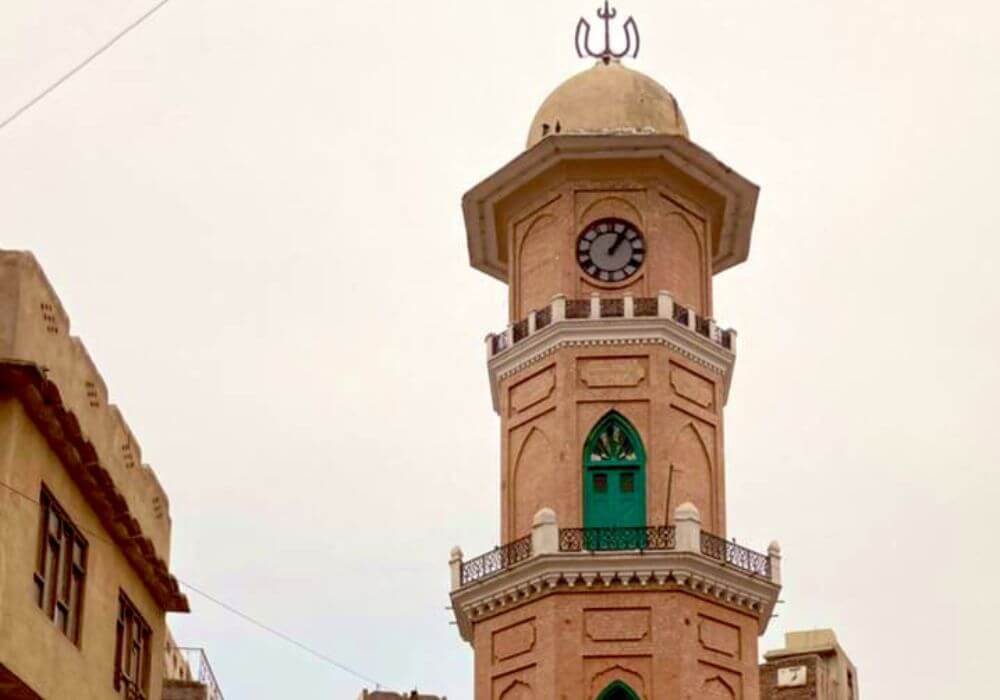
This clock tower in Peshawar has a stunning design that reminds us of the British era. It’s been around for over a hundred years and is a must-visit place for locals and tourists.
Historical significance: In 1898, James Strachan, the Municipal Engineer of Peshawar, designed a building in honor of Queen Victoria’s Diamond Jubilee. It was opened to the public in 1900 and funded by the Balmukand family. Unfortunately, during the 1965 Indo-Pak war, the building was mistakenly targeted and damaged by an Indian plane, thinking it was part of Peshawar airport. However, in 2003, Haroon Bilour oversaw the rebuilding of the structure.
Buddhist Stupa (Sahji Ki Dheri)
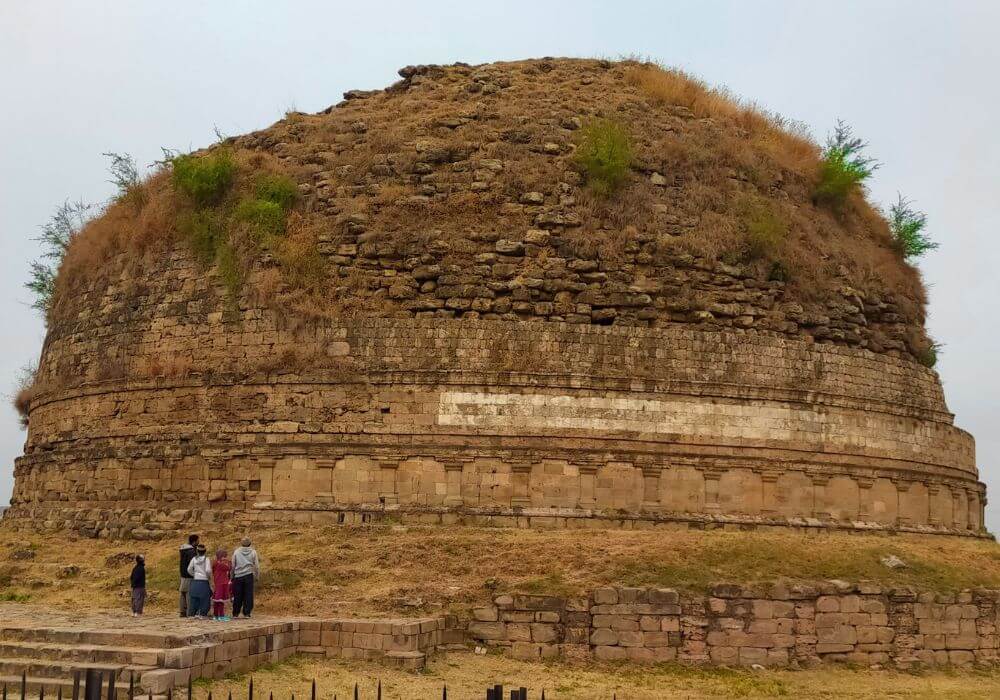
Buddhist stupas are sacred structures that hold great significance in Buddhism. One such stupa is the Sahji Ki Dheri, a renowned Buddhist monument located in Peshawar.
Historical significance: According to historians, Shah ji ki Deheri is the ancient site in Peshawar. This stupa was constructed during the 3rd or 4th century by King Kenishka, a Buddhist ruler. It was a massive monument, standing approximately 300 feet tall. During that time, Buddhism was the state religion in Peshawar.
In the British era, JS Marshal, a prominent archaeologist, excavated this site. He found a casket containing relics later handed over to the Burmese government. The casket itself is now housed in the Peshawar Museum. Presently, the area surrounding the site has turned into a large Muslim graveyard, and people occupy the immediate vicinity.
Mughal Bridge
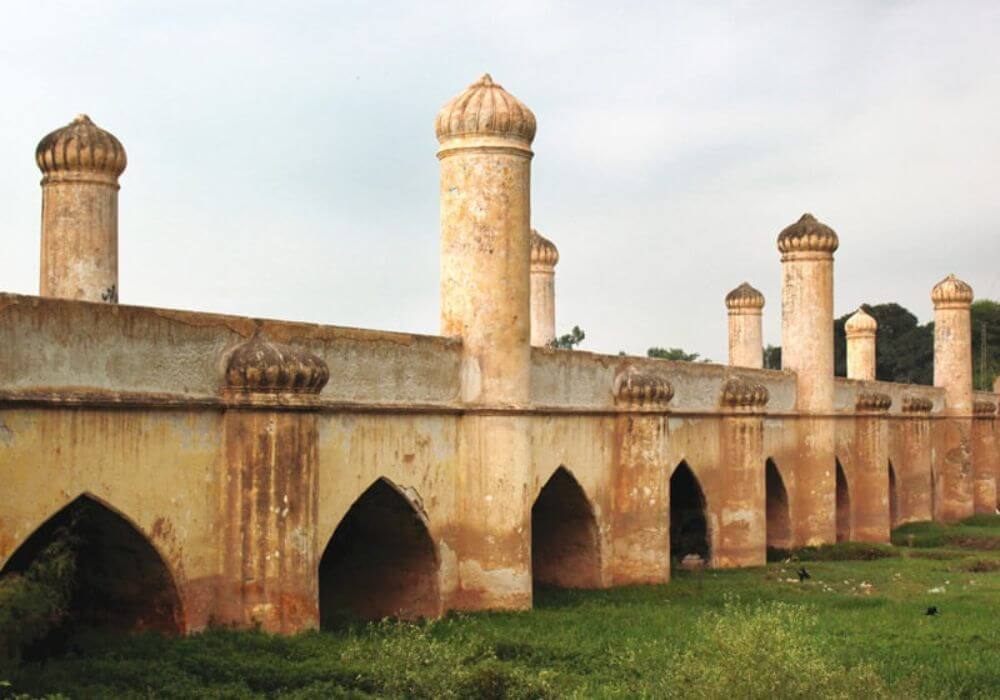
Mughal Bridge is an amazing bridge over the famous Bara River, showcasing the stunning architecture of the Mughal era. Despite being more than 300 years old and not being officially preserved as a historical site, the bridge is still in good condition. It is one of the few remaining Mughal monuments in Peshawar.
Historical Significance: According to researcher Muhammad Nawaz Khan, a bridge in Peshawar was likely built during the Mughal era around 1629, possibly during Shah Jehan’s rule. However, there is no evidence to support this claim. Khan also mentioned another bridge on the road between Chamkani village and GT Road, which was constructed by a philanthropist named Karim Bakhsh Sethi. He stated that there used to be a mosque near the bridge, but it no longer exists.
Chowk Yadgar
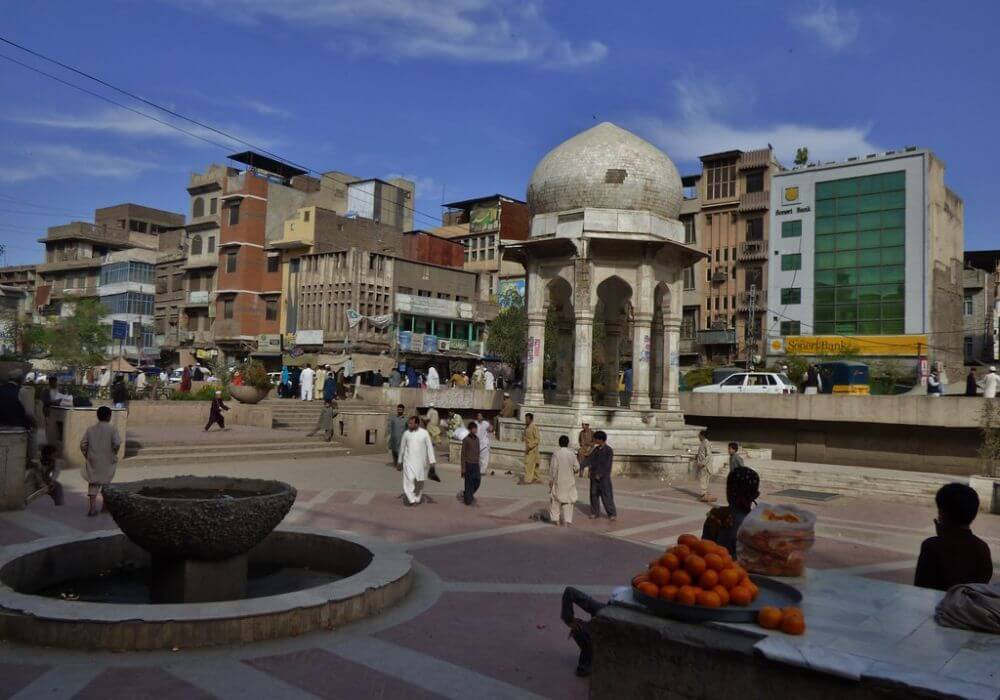
Chowk Yadgar, also known as Memorial Square, is a famous location in the historic walled city of Peshawar. Situated at the intersection of various main roads and markets, it holds significance for its association with hawala business in the city. In simpler terms, it is a well-known place where hawala transactions take place in Peshawar.
Historical significance: Chowk Yadgar was created in the early 1900s to honor King George V and Queen Mary’s trip to Peshawar in 1905. It was initially a magnificent gateway that served as the entrance to the city, but it got destroyed during a flood in 1929. In 1968, the current structure was constructed, which has become a well-known city symbol.
Also, check our blog post: 11 Most Famous Mosques in Pakistan
Wazir Bagh
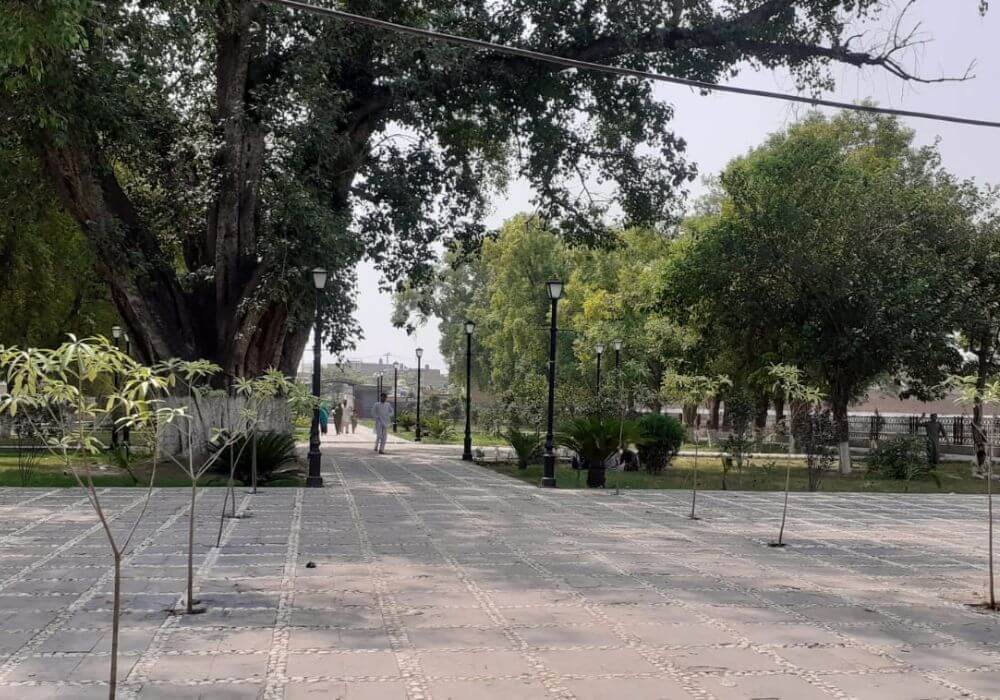
Wazir Bagh offers various attractions and activities to engage visitors of all ages. Take a leisurely walk through the garden, immersing yourself in the beauty of nature. Visit the enchanting rose garden, where the fragrant blossoms captivate your senses. Marvel at the symmetrical layout of the garden, designed to inspire a sense of harmony and balance.
Historical significance: Wazir Bagh holds great historical importance, dating back to the Mughal era. It was commissioned by Nawab Muhammad Yusuf Khan, who served as the governor of Peshawar in the late 19th century. The garden was named after Nawab’s esteemed title of “Wazir,” meaning minister. It served as a retreat for the Nawab and his family, providing them with a sanctuary away from the demands of governance.
Conclusion
Peshawar, Pakistan, is a city rich in historical places that offer a glimpse into its remarkable past. Each of these sites carries its own significance and contributes to the cultural and architectural heritage of the region. Exploring these historical places in Peshawar allows visitors to delve into the city’s vibrant past, appreciate its diverse cultural heritage, and understand its significance in the broader context of Pakistan’s history. These sites serve as a reminder of Peshawar’s enduring legacy and its contributions to the cultural mosaic of the region.

